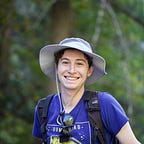Being creative with Ag satellite data
Imagery is a hot topic in ag especially with drones and the likes of planet labs etc… We are getting more and more data every day however it seems as though no one wants to go through the effort to extract some extra value or meaning out the imagery. Yes, I get it, you probably want to use some machine learning or whatever to detect pests but I’m not interested in that. I want to see long term trends in how the soil supports plants over a few years.
My original approach was to layer all the satellite imagery and look at each field while turning all the layers on and off to see a correlation. This approach took an incredible amount of time as if I saw a problem spot, I would have to flip on and off about 20 layers to see if it showed up other places and when it showed up.
This project turned into a bit of a nightmare since I was manually checking most imagery for every field to see about this correlation. Unfortunately at the time, I didn’t think through alternative ways of doing this.
Thankfully sometimes I have some good shower thoughts and realized I should just merge all the imagery for the year into one image. This way all the spots that did well will accumulate and similarly the poor spots will accumulate. There are a few flaws with this processing method such as comparing the field to field performance being affected by plant/harvest dates as well as season length. That said, I would say until I can figure out a field-by-field metric, this is much better than the previous method of lots of layers. The following image is a b&w average image for 2019. This data can then be cut and colorized to match high/low vegetation for easier interpretation.
Once the data is cut/colorized it looks like the following image. The cool part about this process is that it ignores most of the seasonality effects of imagery and just allows you to take a look at overall field performance and weak/strong areas. You can see, once colorized, the field performance becomes clear and allows non-technical people to compare year-to-year performance.
Creating the average map is actually quite simple and only takes a few steps. For some reference, I use QGIS for GIS processing and I wasn’t able to find a good plugin to take the raster averages so I had to process the data semi-manually. Your mileage may vary using ESRI.
To start, load all the vegetative data from a season into your project, then using the raster calculator, all you need to do is add up all the layers then divide by the number of layers. Just like taking the average of anything else.
After completing the calculation, the raster will look something like this:
From here, a style can be applied to colorize the data similar to the colored image above. After doing this process for a few seasons, you’ll be left with a group of imagery that you can easily compare year over year!
